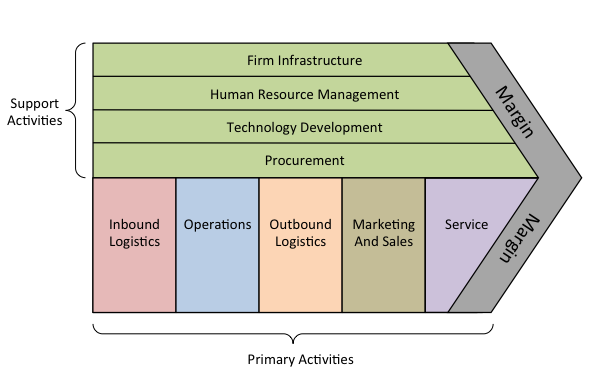
Elements of The Value Chain:
Identification of key activities, and their relation
Principle:
Arise of competitive advantage – one or more processes or sub processes
Issues:
To determine most critical factors and outperform competitors
Applications:
To determine most critical factors and outperform competitors
Source of The Value Chain:
Porter (1985)






